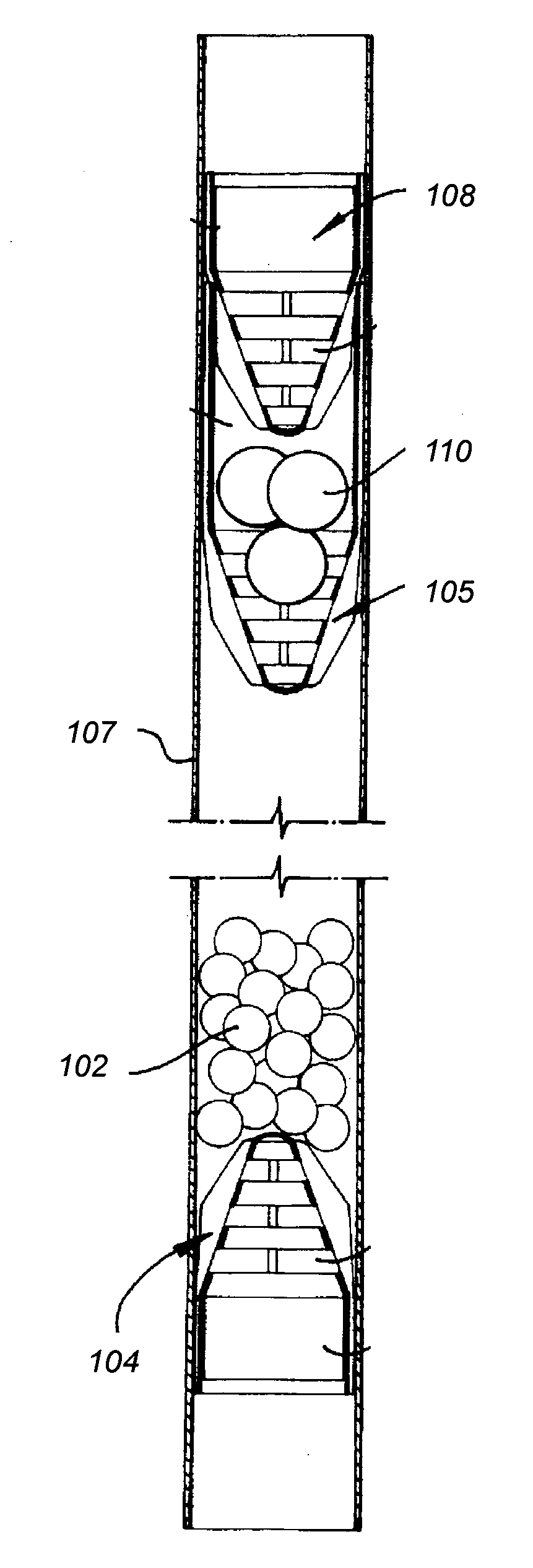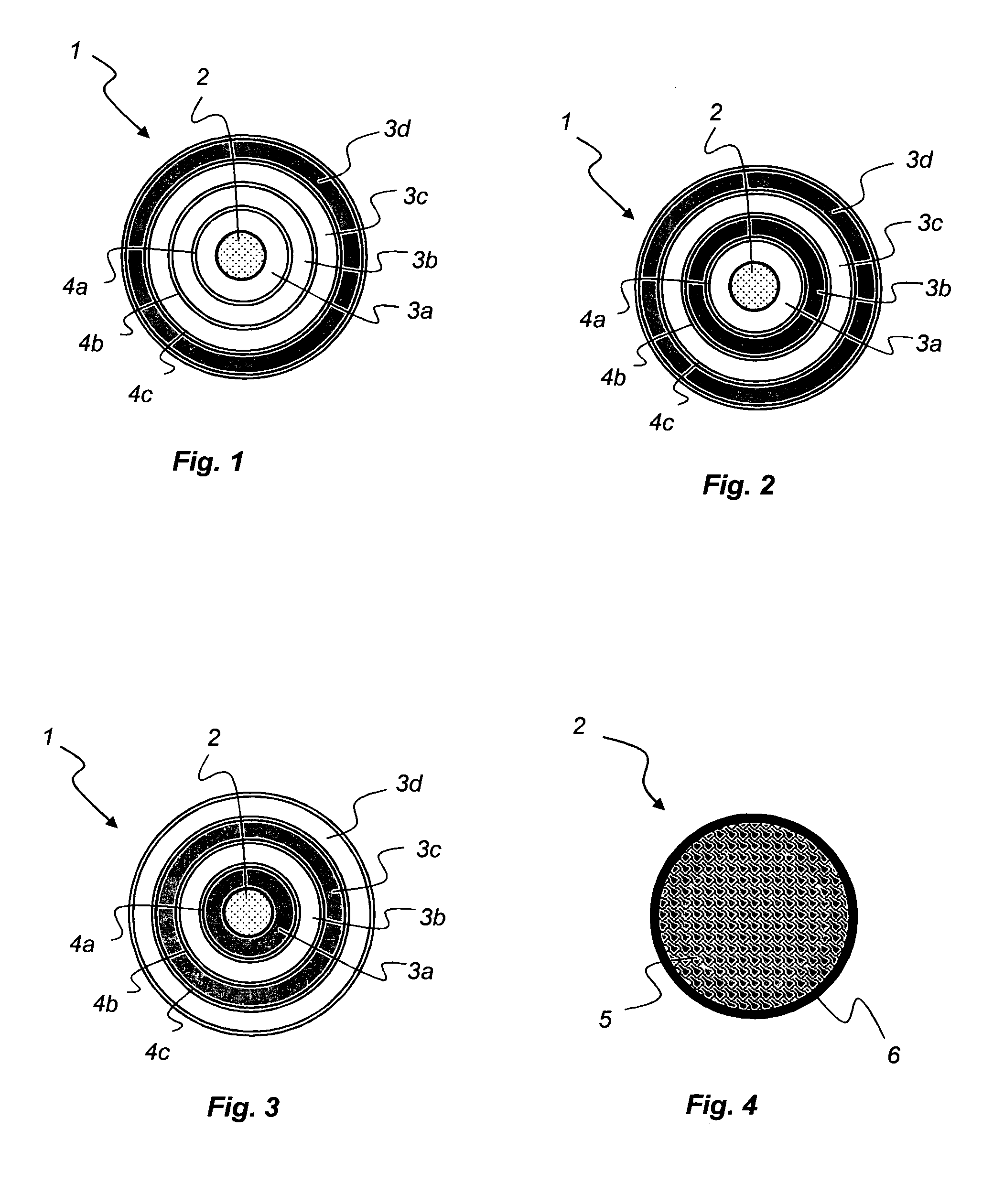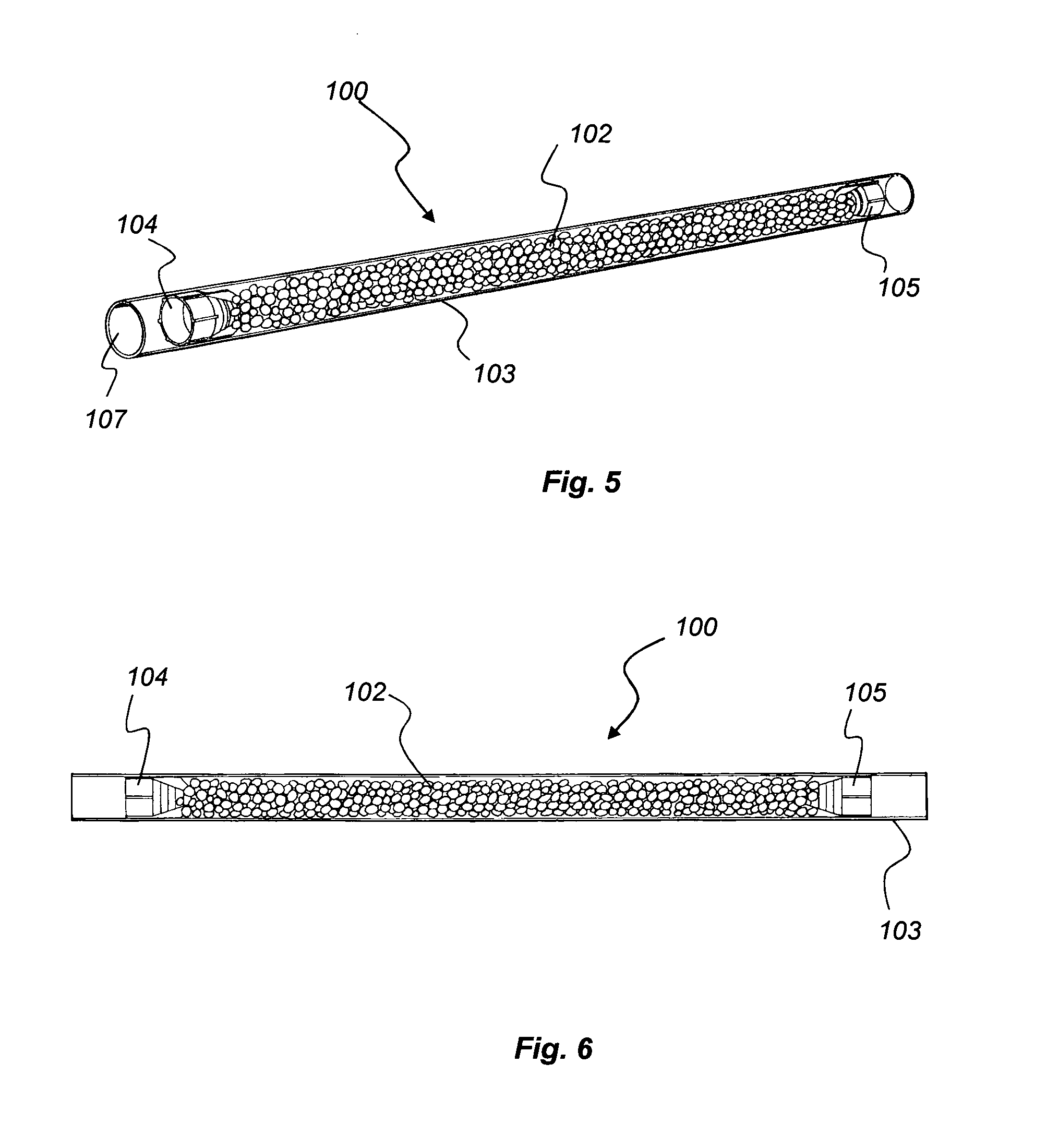Probiotic Compositions, Methods and Apparatus for Their Administration
a technology of probiotic compositions and compositions, applied in the direction of bacteria, fungi, pilule delivery, etc., can solve the problems of poor survival, and achieve the effect of encouraging survival, growth and proliferation of probiotic microorganisms
- Summary
- Abstract
- Description
- Claims
- Application Information
AI Technical Summary
Benefits of technology
Problems solved by technology
Method used
Image
Examples
example 1
Probiotic Coating of Beads Using Sugar Syrup, PVP or PVA
[0127]This process involves coating beads using a sugar crystal as the bead core (seed) and panning the bead by successive additions of tapioca starch-maltodextrin powder and sugar syrup. Beads were warmed in a pan prior to the addition of a quantity of sugar syrup immediately followed by a quantity of powder and then syrup and then powder. The process is successively repeated until the bead is the desired size, preferably 1.9-2 mm. The beads were coated with the probiotic using the panning process to produce layered beads. The probiotic was added to the tapioca starch-maltodextrin powder. The process was also modified to include skim milk in the tapioca-maltodextrin powder (10%) and using polyvinylpovione (PVP) adhesive or polyvinylalcohol (PVA) adhesive instead of sugar syrup.
[0128]To provide 2 kg of layered 2 mm beads, five to six coats were applied to the beads in successive panning steps using 250 g of powder mix and 95 ml...
example 2
Probiotic Coating of Beads Using Adhesive Syrup (Addition of Probiotic to Powder)
[0129]This process involves coating beads using a sugar crystal as the bead core (seed) and panning the bead by successive additions of tapioca starch-maltodextrin powder and sugar syrup. The beads were coated with the probiotic by the panning process as used to produce layered beads of approximately 2 mm in diameter. The probiotic was added to a tapioca starch-maltodextrin powder with the following composition to yield a probiotic concentration in the finished beads in the range 106 to 1010 viable cells per gram as required for the particular application:
Tapioca starch 80 gMaltodextrin 20 gSilica dioxide2.5 gSucralose1.0 g (optional ingredient)
[0130]When coating the beads with the probiotic powder, the sugar syrup was replaced with an adhesive syrup. The composition of the adhesive syrup was as follows:
Gum acacia2.5% Soy protein 5%Canola oil 2%Lecithin0.25% Lactose10%Maltodextrin30%Water50%
[0131]Five t...
example 3
Probiotic Coating of Beads Using Sucrose-Free Syrup and an Extra Coating Over the Probiotic
[0133]This process involves producing beads using a sugar crystal bead core as per Example 2, panning the bead by successive additions of tapioca starch-maltodextrin powder and sugar syrup to produce beads including the probiotic using the panning process as used to produce layered beads of approximately 2 mm in diameter prepared in accordance with example 1. The probiotic was added to a tapioca starch-maltodextrin powder with the following composition and to yield a probiotic concentration in the finished beads in the range of 106 to 1010 viable cells per gram as required for the particular application. The composition of the tapioca starch-maltodextrin powder was as follows:
Tapioca starch80 gMaltodextrin20 gSilica dioxide1.0 gSucralose2.5-5.0 g(optional ingredient)
[0134]When coating the beads with the probiotic powder an adhesive syrup was used. The composition of the syrup was as follows:
Gu...
PUM
 Login to View More
Login to View More Abstract
Description
Claims
Application Information
 Login to View More
Login to View More - R&D
- Intellectual Property
- Life Sciences
- Materials
- Tech Scout
- Unparalleled Data Quality
- Higher Quality Content
- 60% Fewer Hallucinations
Browse by: Latest US Patents, China's latest patents, Technical Efficacy Thesaurus, Application Domain, Technology Topic, Popular Technical Reports.
© 2025 PatSnap. All rights reserved.Legal|Privacy policy|Modern Slavery Act Transparency Statement|Sitemap|About US| Contact US: help@patsnap.com



